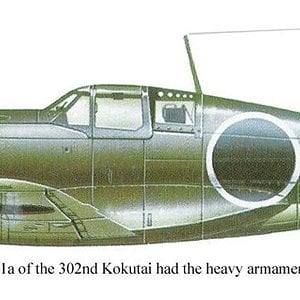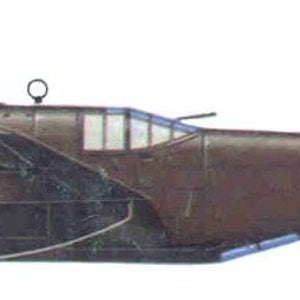Navigation
Install the app
How to install the app on iOS
Follow along with the video below to see how to install our site as a web app on your home screen.
Note: This feature may not be available in some browsers.
More options
You are using an out of date browser. It may not display this or other websites correctly.
You should upgrade or use an alternative browser.
You should upgrade or use an alternative browser.
The Mitsubishi Ki-30 was a Japanese light bomber of World War II. It was a single-engine, mid-wing, cantilever monoplane of stressed-skin construction with a fixed tailwheel undercarriage and a long transparent cockpit canopy. The type had significance in being the first Japanese aircraft to be powered by a modern two-row radial engine. During the war, it was known by the Allies by the name Ann.
The Ki-30s were first used in combat in Second Sino-Japanese War from spring 1938. It proved to be reliable in rough field operations, and highly effective while operating with fighter escort. This success continued in the early stages of the Pacific War, and the Ki-30s participated extensively in operations in the Philippines. However, once unescorted Ki-30s met Allied fighters, losses mounted rapidly and the type was soon withdrawn to second-line duties. By the end of 1942, most Ki-30s were relegated to a training role. Many aircraft were expended in kamikaze attacks towards the end of the war.
Info: Wikipedia
http://en.wikipedia.org/wiki/Mitsubishi_Ki-30
Profile: Fighting Aircraft of World War II
Published by Salamander Books.
The Ki-30s were first used in combat in Second Sino-Japanese War from spring 1938. It proved to be reliable in rough field operations, and highly effective while operating with fighter escort. This success continued in the early stages of the Pacific War, and the Ki-30s participated extensively in operations in the Philippines. However, once unescorted Ki-30s met Allied fighters, losses mounted rapidly and the type was soon withdrawn to second-line duties. By the end of 1942, most Ki-30s were relegated to a training role. Many aircraft were expended in kamikaze attacks towards the end of the war.
Info: Wikipedia
http://en.wikipedia.org/wiki/Mitsubishi_Ki-30
Profile: Fighting Aircraft of World War II
Published by Salamander Books.








